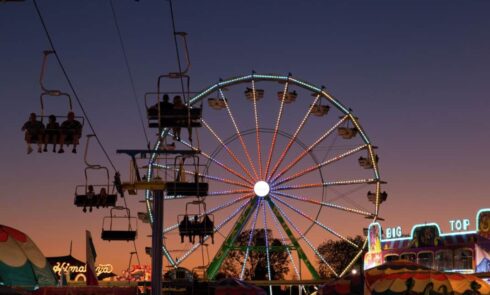Sacramento’s rich and intriguing history is not just about its status as California’s capital, but it’s also deeply rooted in the California Gold Rush era. This monumental period played a significant role in shaping the city we see today. Sacramento is teeming with various attractions – museums, historical sites, and monuments that take you back to that yellow metal frenzy.
Taking a Stroll Through History: Sacramento’s Rich Gold Rush Legacy
The city of Sacramento, soaked in a deep-rooted historical narrative, played a significant role in the California Gold Rush—a truly transformative chapter in the state’s growth story. The city’s numerous museums and attractions tell compelling tales of this glittering period.
As you traverse Sacramento, you unearth fascinating Gold Rush echoes at destinations including the charming Old Sacramento Waterfront, the engaging California State Railroad Museum, the comprehensive Sacramento History Museum, and the historic Sutter’s Fort. Venture just a bit further from downtown, and you can tread upon the very hills and riverbanks that witnessed the discovery of gold.
Here, we introduce you to five notable Sierra gold mines, each offering a unique narrative and immersive historical experience instilling a sense of the pulsating Gold Rush era.
1. Marshall Gold Discovery State Historic Park — The Birthplace of the Gold Fever
Marshall Gold Discovery State Historic Park is where this golden saga began. In 1848, James Marshall, while working on a sawmill project with John Sutter, stumbled upon gold. It’s at this very site where visitors can explore a replica of the original sawmill, over 20 historical structures including a house, school, mining exhibits, and store exhibits. You can also try your hand at gold panning in the American River, or delight in hiking and picnicking amidst the stunning river canyon.
2. Columbia State Historic Park — Time Travel to a Gold-era Town
Gold was discovered in Columbia in the spring of 1850, triggering an influx of gold seekers and eventually birthing the town of Columbia. As one of the best-preserved Gold Rush towns, visitors can indulge in gold panning, experience a thrilling stagecoach ride, and enjoy shopping and dining reminiscent of the times gone by.
3. Empire Gold Mine — A Century of Gold Mining Heritage
The Empire Gold Mine, operational from 1850 to 1959, was California’s oldest, largest, and wealthiest mine. The park encloses several of the original structures, including the owner’s cottage and gardens, along with a museum and the mine itself. Spend a day exploring the history of gold mining, and take pleasure in the park’s forested backcountry and trails, suitable for hiking, cycling, and horse riding.
4. Gold Bug Park — An Educational Adventure for All Ages
Situated north of Placerville, Gold Bug Park is the closest gold mine to Sacramento and greatly popular with children and school groups. It offers an informative self-guided audio tour of its mine, a miner’s blacksmith shop, stamp mill, museum, and gift shop. Additionally, the park features hiking trails, picnic areas, and gem panning.
5. Kennedy Gold Mine — Delving Deep into Gold Mining History
Close to the town of Jackson, Kennedy Gold Mine gained popularity as one of the world’s deepest gold mines. Visitors can tour the mine office building, explore gold mining equipment, enjoy a nostalgic video of miners working in the early 1900s, and visit the gift shop for some unique memorabilia.
However, if you’re planning a visit, do ensure to check each individual park’s website as some tours might not be fully operational until later in the spring.
Conclusion
Sacramento’s connection with the Gold Rush era is deep and multifaceted. The city’s growth, from a transit hub for gold seekers to a vibrant city with a diversified economy, has its roots in this transformative period. The numerous museums, historical sites, and gold mines that dot the city serve as poignant reminders of this golden past. They offer not just a tourist attraction but an opportunity to appreciate the resilience and dynamism that shaped Sacramento.


